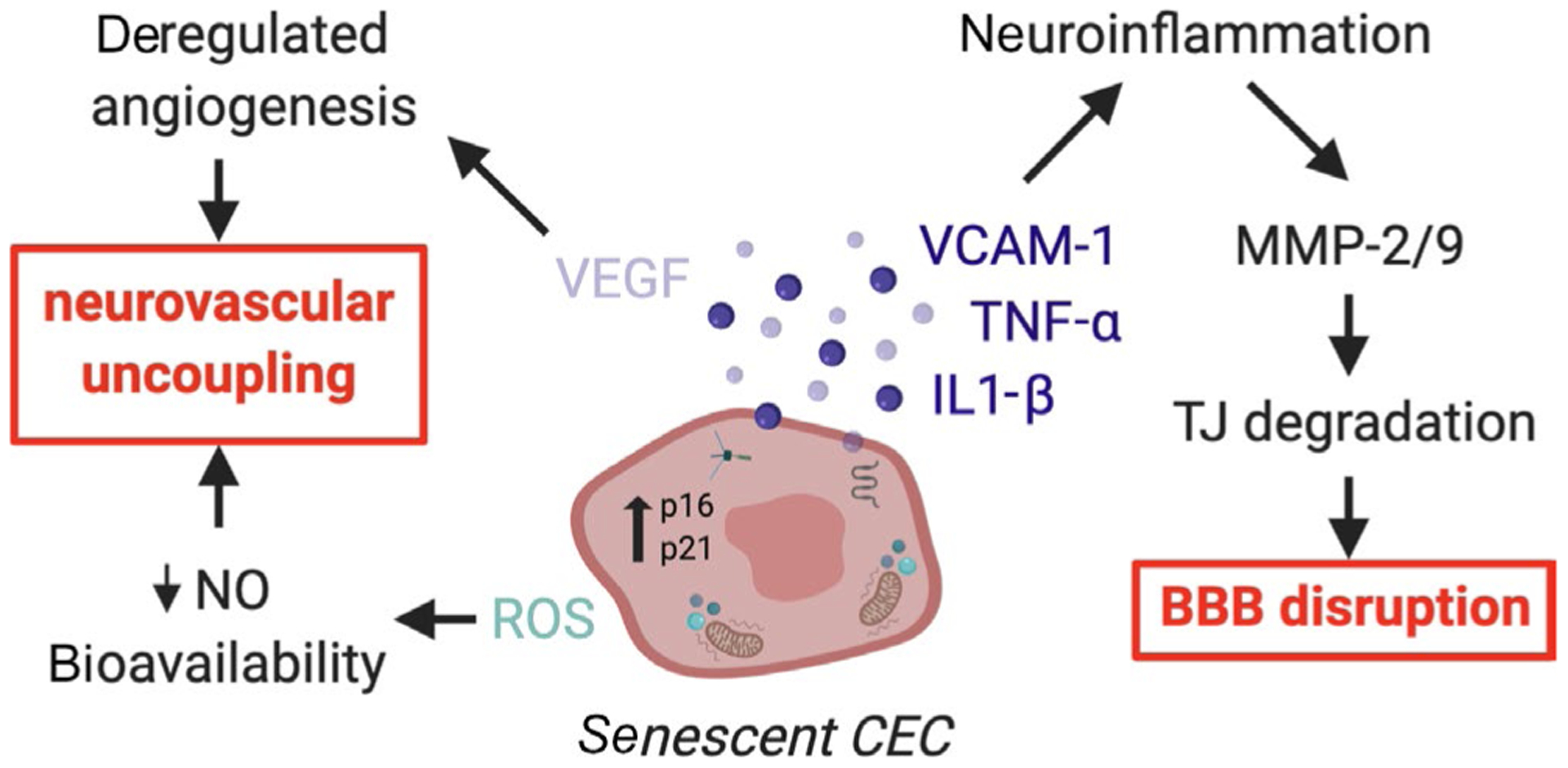FIGURE 2.

Proposed mechanisms for how senescent CECs affect the BBB and NVU. Senescent cerebrovascular endothelial cells (CECs) are hypothesized to accumulate with aging and cerebrovascular diseases like dementia by affecting neurovascular coupling and the blood-brain barrier (BBB). In general, senescent cells secrete pro-inflammatory molecules like VCAM-1, TNFα, and IL-1β, which stimulate greater neuroinflammation. Thus, one mechanism by which senescent CECs may induce BBB disruption is by stimulating chronic states of neuroinflammation and activating cytokine-inducible matrix metalloproteases (MMPs) that directly degrade tight junction (TJ) proteins. Senescent CECs may also promote neurovascular uncoupling via de-regulated VEGF/angiogenesis and/or increased reactive oxygen species (ROS)/decreased nitric oxide (NO) axes
